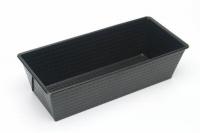Cooking with children in kindergarten
Children usually love any kind of activity, such as playing, doing gymnastics, painting, etc. They particularly enjoy doing activities that they are familiar with through their daily routine with their parents, such as B. Vacuuming, wiping, etc. Many children experience these activities as demanding adult tasks, in which they often enjoy participating with pride and self-confidence. In the kitchen area in particular, the joy and pride of children explode when, after cooking together, they can consume the meals they have prepared themselves in the family. Cooking together with children is a very popular activity method in kindergarten that you can also use at home
Cooking with children is a teaching method in kindergarten
Every educator learns to differentiate which one in his training in the field of pedagogy, psychology, didactics and methodology Activity learning goals with which child-friendly teaching method support the individually promoted development goals or without overwhelming the child. So if you need advice on how to cook with children at home, any educator should be able to give you tips. In plain English this means:
- Every single activity leads to a specific experience and learning effect. Activities can lead to learning effects that are too demanding or too demanding, goal-oriented or uncoordinated. For this reason, in kindergarten children with a similar level of development are grouped together to form an "occupation group" in order to be able to participate in a specific activity, e.g. B. Cooking with children, to support child development in a pedagogically meaningful way, age-appropriate and individually.
- Cooking with children in kindergarten can therefore turn out very differently. Perhaps there are some goals that are similar between the different age groups of the children, such as: B. Learn to deal with food, support self-confidence, promote independence. Nevertheless, educators need to know how to differentiate, based on age, which fine and long-term goals are in the foreground.
- While a three-year-old child should learn how to use "cooking utensils" properly, it can six-year-old child already independently, according to a child-friendly recorded recipe, independently (under Supervision). Take a look at the different learning objectives: The three-year-old will u. a. supports you to become more attentive, to act with fine motor skills, etc. while the six-year-old has already mastered this and also learns to cook independently and in a self-controlled manner without personal "instruction", according to "recipe recording".
There are a few tips to keep in mind when cooking with children
If you want to cook with your children now, the joint cooking lesson is as complex an elaboration as they are in kindergarten can be demanded professionally, of course not possible and also not absolutely necessary. For you, in your private sphere, it will primarily be about having fun together. And that's good. But probably yours are children of different ages and it is useful if you take a few tips into account so as not to over- or under-challenge your children.
Learning on the project has a long history that goes back to the 16th Century to ...
- In the private sphere, you will have to clarify with your children in advance why the older child is allowed to take on one or the other task, while the younger one is only allowed to do this the next time. Challenge your youngest child to realize that everything has to be learned first. But next time you also ask your eldest to have a head start in experience. After all, you are also handing over more and more tasks to your elders while cooking.
- What do you want to cook? Maybe potatoes, broccoli and goulash? Then think about which tasks you have to do one after the other and to what extent your children still need guidance. Prepare a child-friendly recipe. D. H. paint on the cooking routines, such as B. Potatoes, broccoli, wash the meat, peel the potatoes, chop up the broccoli, cut the meat into goulash, put the potatoes in the saucepan with water and salt, etc.
- Discuss the recipe with your children and consider together who has already mastered which tasks and who is now learning which tasks with your help, such as: B. To cut broccoli together with a (not quite as sharp) knife (explain the kitchen utensils), while the older child may already be able to use the paring knife to peel the potatoes take over. Set up the workstations in your kitchen clearly so that you have a good overview of your children and all activities.
- In particular, explain why something needs to be done, such as: B. that with unpeeled potatoes too much dirt gets into the potato pores during peeling, that broccoli comes out of the garden and has to be cleaned, etc.
- Especially when you are roasting the meat, your children need the appropriate safety instructions, e.g. B. to choose the flame (in front - so as not to put the meat over the steaming potato pot having to watch), handle the pot to the side so as not to accidentally hang on it stay etc.
- As in kindergarten, you will not be able to cook with your children because you probably do not have a "children's kitchen", but only the normal family kitchen. Therefore, you shouldn't set your goals too high. The main priority is to control the safety factor when cooking and make sure that your children are having fun. At the beginning, clarify the cooking processes with them, this makes children safer and allow them to cook independently (under your supervision) as far as possible.


